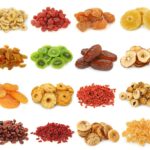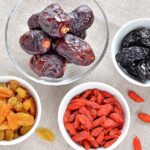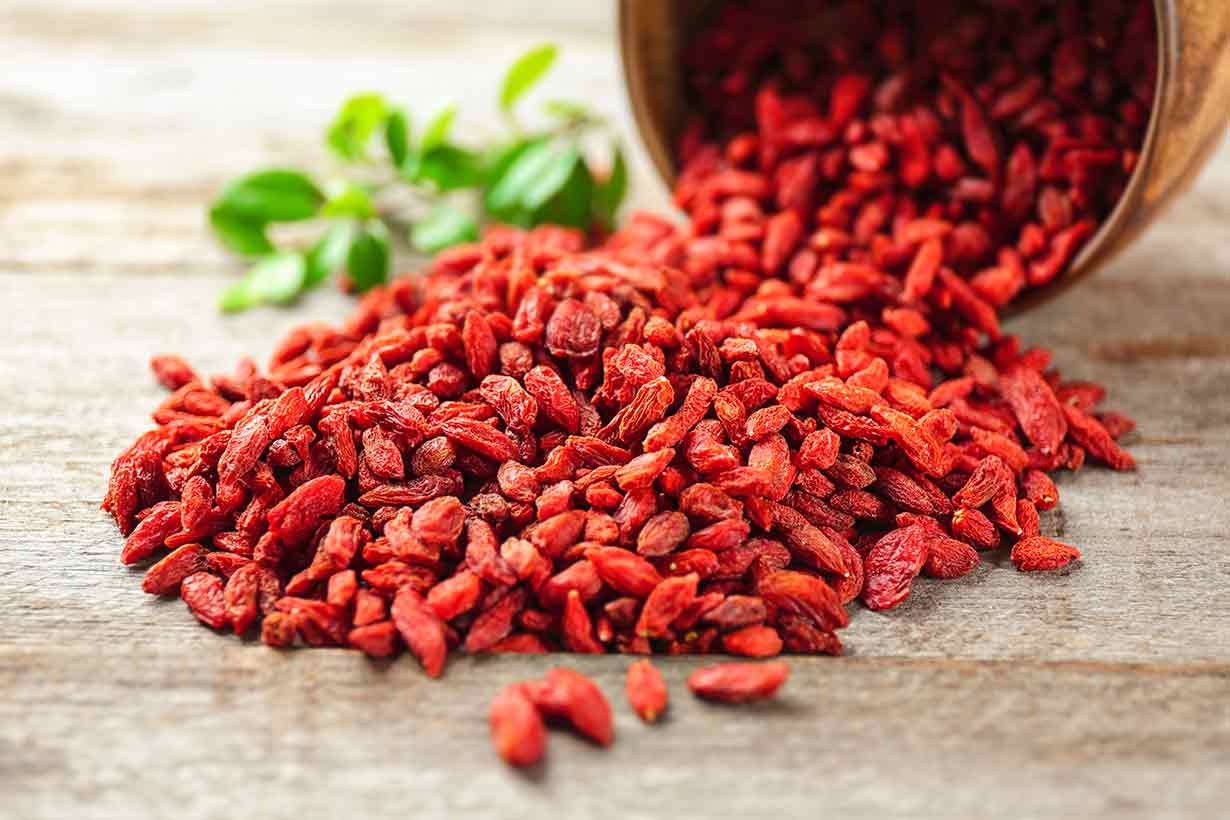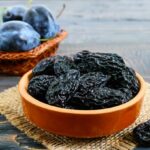Dried Figs: a Complete Nutritional Guide
Dried figs are among the most popular varieties of dried fruit, especially during the winter season.
While many people enjoy their taste, are figs a good source of nutrients? And do they offer any potential health benefits?
This article provides a comprehensive nutritional guide to dried figs.
Table of contents
Key Nutrients and Nutritional Benefits
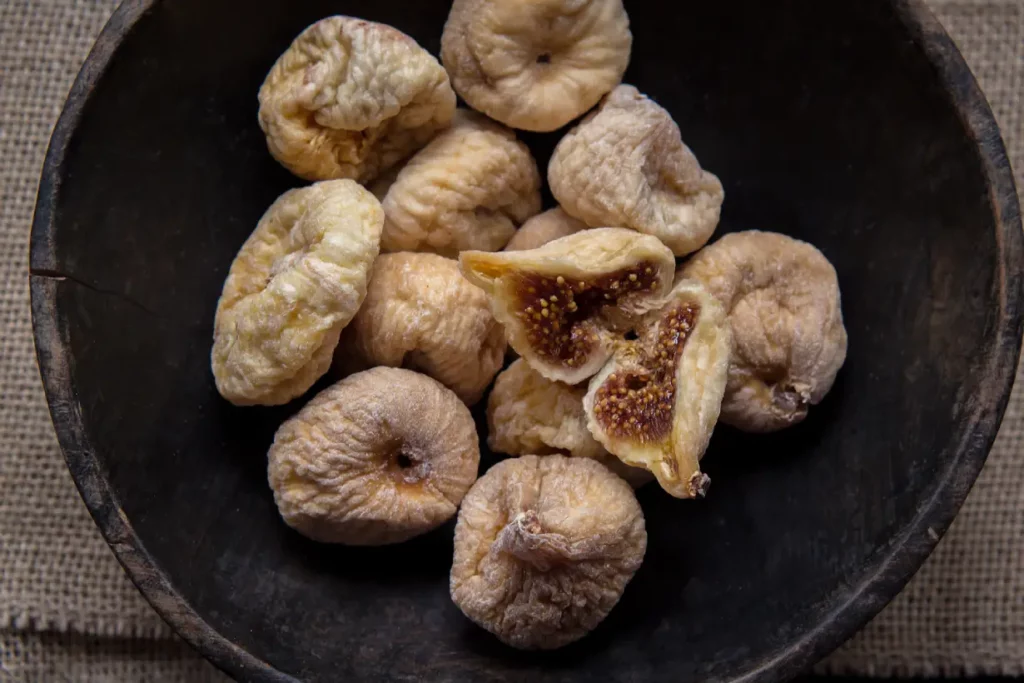
First, let’s explore the key nutritional benefits of dried figs and the essential nutrients they provide.
A typical serving size of dried figs is 40 grams, roughly equivalent to five figs. Based on USDA data, the key nutrients in this serving are as follows (1, 2):
- Fiber: 3.9 grams (14% of the daily value, % DV)
- Copper: 13% DV
- Potassium: 6% DV
- Magnesium: 6% DV
- Calcium: 5% DV
- Iron: 5% DV
Dried figs also contain smaller amounts of other vitamins and minerals. For a detailed breakdown, see the full nutritional profile later in this article.
Key point: The nutrients dried figs contain in the highest concentrations are copper, potassium, magnesium, calcium, and iron.
Dried Figs Provide Underconsumed Nutrients
It is worth noting that fiber, potassium, and calcium are three of the four “dietary components of public health concern for the general U.S. population” (3).
Since many people underconsume these nutrients, the average intake across the population is significantly below recommended levels.
Including dried figs in the diet can help to increase dietary intake of calcium, fiber, and potassium. These nutrients provide the following benefits:
- Fiber: Helps lower blood sugar, reduce LDL cholesterol (LDL-C) levels, promote regular bowel movements, and enhance satiety (4, 5, 6).
- Calcium: Plays a key role in maintaining strong bones, supports muscular contraction, and may slightly lower blood pressure (7).
- Potassium: Plays a primary role in regulating fluid balance and lowering blood pressure (8, 9).
Key point: Dried figs provide fiber, calcium, and potassium, three nutrients categorized as ‘dietary components of public health concern’ due to widespread underconsumption.
The Soluble Fiber In Dried Figs May Help To Lower LDL Cholesterol
This table shows the fiber and soluble fiber content of various fruits per serving. Dried figs have one of the highest provisions of fiber among these fruit, with more than half of their fiber being soluble.
Research consistently shows that higher dietary intake of soluble fiber helps lower LDL-C levels (4).
This is significant for cardiovascular risk because elevated LDL-C levels are strongly associated with an increased risk of cardiovascular disease (10).
Key point: Dried figs are a good source of soluble fiber, which may help to lower LDL cholesterol levels.
Scientific Research On Fig Benefits
What do scientific studies reveal about the potential health benefits of figs? Let’s examine the findings.
Dried Figs and Menstrual Cycles
A 2020 randomized controlled trial investigated the impact of dried figs on improving pain, stress, and other symptoms during menstruation (11).
The study involved 99 women who were assigned to one of three groups:
- Dried figs
- Cinnamon
- Placebo
Notably, the results showed that compared to cinnamon and placebo, dried fig consumption during menstruation reduced pain severity and duration, as well as perceived stress.
Key Point: A study found that dried figs may help alleviate menstrual pain and stress.
Dried Figs and Cholesterol Levels
A 2011 randomized crossover trial examined the effects of dried fig intake on the cholesterol profiles of 102 adults with high LDL cholesterol levels (12).
In this study, participants consumed 120 grams of dried figs per day for five weeks. However, the intervention had no effect on LDL cholesterol levels. The researchers noted their surprise at this result, given the high soluble fiber content of figs.
They theorized the lack of effect could have been due to the large amounts of sugar in 120 grams of dried figs negating the fiber’s beneficial effects. During the intervention, participants’ dietary sugar intake increased by approximately 38%.
They also noted that the participants had a high baseline fiber intake, which may have made the effects of additional fiber less visible.
Key Point: Despite their high soluble fiber content, a study found that consuming 120 grams of figs daily for five weeks had no impact on LDL cholesterol levels.
Dried Figs and Irritable Bowel Syndrome With Constipation
A randomized controlled trial involving 150 patients with irrital bowel syndrome (IBS) investigated the effect of figs on IBS symptoms, such as constipation (13).
The study found that adding a serving of figs to the diet for four months significantly improved IBS symptoms. These improvements included less pain, more regular bowel movements, and a higher quality of life.
Key point: According to findings from a randomized controlled trial, dried figs can help relieve IBS symptoms.
Other Studies
Several additional studies involving human participants have investigated figs and their potential benefits for blood sugar regulation.
These studies demonstrated that concentrated doses of abscisic acid from fig extracts lowered blood sugar responses to a glucose solution containing 50 grams of carbohydrate (14, 15).
However, these studies used high-strength fig extracts rather than whole figs. In other words, these studies reflect the potential benefits of fig extracts that provide highly concentrated compounds.
We cannot attribute the effects to whole figs, which contain a package of carbohydrates, fiber, sugar, fat, protein, and phytonutrients.
Key point: High-strength abscisic acid doses from fig extracts improve blood sugar responses to carbohydrates. However, these findings can’t be attributed to whole figs.
Dried Fruit Intake Is Associated With Better Diet Quality
Another important finding is that dried fruit intake is linked to better diet quality among U.S. adults.
A 2021 cross-sectional analysis of data from the National Health and Examination Survey (NHANES) found that (16):
- Among 25,590 adults aged over 20, dried fruit consumers had higher diet quality and better intakes of underconsumed nutrients.
- Intakes of key nutrients like fiber and potassium were higher on days when participants consumed dried fruits.
However, we should note that this finding is for ‘dried fruit’ in general and isn’t specific to figs.
On this note, here is some nutritional information on dried apricots and prunes.
Key point: Consuming dried fruit is associated with better diet quality and a greater intake of fiber and potassium.
Do Dried Figs Have Any Downsides?
Now that we have examined the potential benefits of figs, it’s time to consider whether they have any downsides. For most people, including a sensible serving of dried figs in their diet shouldn’t present any drawbacks.
However, while uncommon, allergies can occur (17, 18, 19). Individuals who suspect an allergy to figs should consult their healthcare provider.
Aside from this, dried figs are much easier to consume than their fresh counterparts, and some people may find themselves overindulging. For this reason, it is important to stick with a standard serving size of dried figs, which is approximately 40 grams.
For more on this topic, see here: Is Dried Fruit a Healthy Choice?
Key point: Some potential downsides of dried figs include rare allergies and their over-consumption being easier compared to fresh fruit.
Nutritional Profile For Dried Figs
Based on data sourced from the USDA, the following tables display comprehensive nutritional values for a 40-gram serving of dried figs (1, 2).Nutrient Amount % Daily Value Calories 111 kcal Carbohydrate 25.6 g 9.3% Fiber 3.92 g 14.0% Sugars 19.2 g Fat 0.37 g 0.7% Saturated fat 0.06 g 0.3% Monounsaturated fat 0.06 g Polyunsaturated fat 0.14 g Omega-3 0 g Omega-6 0.14 g Protein 1.32 g 2.6% Cholesterol 0 mg 0%
Vitamins
| Vitamin | Amount | % Daily Value |
|---|---|---|
| Choline | 6.32 mg | 1% |
| Folate, DFE | 3.6 mcg | 1% |
| Thiamin (B1) | 0.03 mg | 3% |
| Riboflavin (B2) | 0.03 mg | 2% |
| Niacin (B3) | 0.25 mg | 2% |
| Vitamin B6 | 0.04 mg | 2% |
| Vitamin B12 | 0 mcg | 0% |
| Vitamin A, RAE | 0 mcg | 0% |
| Vitamin C | 0.48 mg | <1% |
| Vitamin D | 0 mcg | 0% |
| Vitamin E | 0.14 mg | 1% |
| Vitamin K | 6.24 mcg | 5% |
Minerals
| Mineral | Amount | % Daily Value |
|---|---|---|
| Calcium | 64.8 mg | 5% |
| Copper | 0.12 mg | 13% |
| Iron | 0.81 mg | 5% |
| Magnesium | 27.2 mg | 6% |
| Phosphorus | 26.8 mg | 2% |
| Potassium | 272 mg | 6% |
| Selenium | 0.24 mcg | <1% |
| Sodium | 4 mg | <1% |
| Zinc | 0.26 mg | 2% |
Phytonutrients
Dried figs contain a variety of phytonutrients with potential antioxidant capacity.
The primary phytonutrients they contain are phenolic acids and flavonoids. These phenolic acids include chlorogenic acid and gallic acid, while the flavonoid polyphenols include epicatechin, quercetin, and rutin (20).
Foods That Nutritionally Complement Dried Figs
Dried figs don’t provide vitamins A, B12, and D, and they contain very low amounts of choline, folate, and selenium.
To make a more nutritionally complete meal or snack, let’s review some foods that provide these nutrients and combine well with dried figs.
Here are some suggestions for complementary food pairings based on the nutrient they contain:
- Choline: Eggs, ham, roasted soybeans
- Folate: Avocado, mango, oranges, tofu
- Selenium: Brazil nuts, ham, fish, tofu
- Vitamin A: Apricots, cantaloupe, cheese, milk
- Vitamin B12: Cheese, meat or fish jerky, milk
- Vitamin D: Eggs, milk, salmon, smoked salmon
Summary
Dried figs are a convenient and portable food that provide a good source of fiber, calcium, copper, magnesium, and potassium.
Beyond their nutritional content, scientific studies demonstrate that dried figs may offer benefits for digestion, menstrual pain, and improving overall diet quality.
When consumed in a standard serving size, dried figs can be a valuable addition to the diet.

